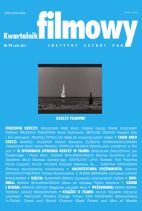Magiczne początki kina
The Magical Beginnings of Cinema
Author(s): Marcin GiżyckiSubject(s): Theatre, Dance, Performing Arts
Published by: Instytut Sztuki Polskiej Akademii Nauk
Keywords: film history
Summary/Abstract: This article has been inspired by two events: the exhibition of Werner Nekes’s collection of pre-cinematic devises organized in conjunction with The New Horizons Festival in Wrocław, Poland (July-August, 2011), and the publication of the special issue of "Animation: An Interdiscipinary Journal" (July 2011) devoted to Pre- and Early Cinema. According to the editors of the issue, André Gaudreault and Philippe Gautier, the notorious question “who invented cinema” – Edison or the Lumiere brothers – is irrelevant, since cinema is a socio-cultural phenomenon that cannot be thought as “invented”. It emerged alongside the institutionalization of film around 1910. Thus early film, so called “cinema of attractions”, has more to do with pre-cinematic shows and devises like magic lanterns, etc., than fully developed entertainment of the later era. The author of this article, after presenting a short history of magic lanterns and their impact on selected poets, writers and filmmakers (e.g. Bergman and Starewicz), argues that linking the birth of cinema to the institutionalization of the medium obscures another important question: What constitutes film as a work of art? Polish filmmaker, philosopher, and writer Stefan Themerson also agreed in his essay of 1937 "The Urge to Create Visions" that the invention of the cinematograph had nothing to do with the inception of cinema but for him the latter was actually a much wider and older concept connected to the eternal human quest for all kinds of moving spectacles.
Journal: Kwartalnik Filmowy
- Issue Year: 2011
- Issue No: 74
- Page Range: 208-213
- Page Count: 6
- Language: Polish

